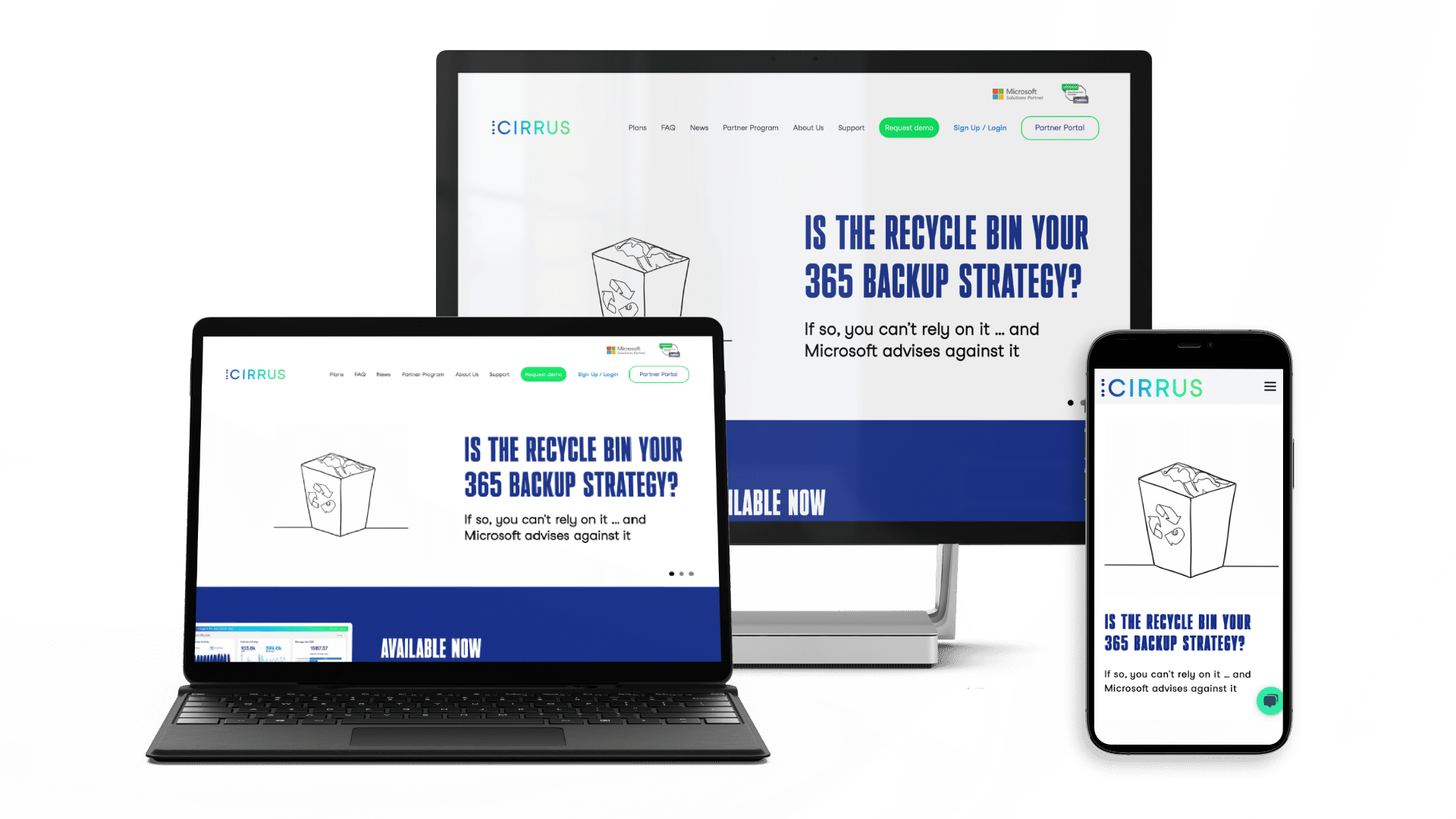Channel Partnerships: Everything You Need To Know
What are channel partnerships? And how can they help boost sales for your tech organisation? Here’s everything you need to know.

Accelerating the growth of your B2B tech organisation can be challenging. No matter how good your growth strategy is, your resources remain limited, and unless you have a big pile of reserve cash to spend on scaling your business, hitting your growth goals won’t be easy.
By partnering with other companies, you can expand your market reach and get your products in front of more people without incurring the costs associated with hiring additional staff, opening new offices, or launching expensive marketing campaigns.
But what are channel partnerships, and how can they help boost sales for your tech organisation? Let’s discuss this in more detail.
Let’s dive right into it!
Table of Contents
- What Are Channel Partnerships and How Do They Work?
- How can Channel Partners Benefit Your B2B Tech Business?
- What are the Pros and Cons of Channel Partners?
- What Are the Different Types of Channel Partners?
- How to Identify the Right Channel Sales and Channel Partner Program for Your SaaS Business
- How to Measure and Improve the Performance of Your Channel Partner Program
- How Can You Adapt Your Channel Partner Program to Shifting Customer Preferences
- Overcoming Potential Challenges: Tips to Maintain and Grow Your Channel Partner Program
- The Future of Channel Partner Programs: How Will Technology Shape the Way Channel Marketing Is Done?
What Are Channel Partnerships and How Do They Work?
A channel partnership is a form of collaboration between two organisations, where one organisation resells, distributes, or markets for the other organisation’s products or services.
The purpose of a channel partnership is a mutually beneficial arrangement to increase market share, boost revenue, and support the growth of the organisation by making its products available to more customers in different markets.
Sometimes, the scope of a channel partnership covers more than just sales. In many channel partnerships, the channel partner also handles customer success, technology implementation, and managed services.
Referral partners generate revenue through referral fees or by offering complementary services or add-ons to the original service product, such as training, managed services, consulting, and customer support.
How Can Channel Partners Benefit Your B2B Tech Business?
According to a recent survey, up to 66% of B2B business leaders expect at least an 11% increase in sales and revenue with partner ecosystems. Here’s how leveraging channel partnerships can help your organisation:
Channel Partners Boost Sales and Maximise Your Growth Potential
The value proposition of a channel partner program is pretty simple: it helps you make more money faster. In a recent survey by HubSpot, Canalys, and Partnership Leaders, 49% of respondents credit their partners for up to 29% of their revenue.
Take Atlassian as an example – one-third of the Australian software company’s revenue comes through its 700+ list of service and sales partners. If you do the math, you’ll learn that Atlassian has made roughly US$930 million from channel partnerships alone out of a total revenue of US$2.8 billion in 2022.
This allowed Atlassian to direct more resources to R&D instead of sales, resulting in better SaaS products that their customers will love even more.
One might argue that Atlassian is an already-established player in the market, but younger companies can take a similar approach with an even more amplified impact on its sales potential. TrialPay, an alternative e-commerce payment system, managed to grow its client list from zero to 10,000 clients in just 2 years after launching in 2006.
The company relied on partnerships with other companies, like WinZip. When people used WinZip’s services, they were also using TrialPay’s payment system.
Channel Partners Unlock Access To New Markets Faster
Breaking into new, geographically distributed markets can be costly and time-consuming. On the other hand, growing with channel partners doesn’t require a significant investment, ensuring that your company’s growth isn’t constrained by your company’s resources, location, and spending capabilities.
This means increasing revenue by reaching end customers in new market segments.
Let’s take a look at a quick case study. The US-based Zoom Video Communications sought to expand its presence in the Japanese market. The main challenge here was to find a compelling way to convince customers in Japan with their product.
The Zoom team decided to create strategic channel partnerships with local allies that have a proven track record of expanding the growth of new products in the Japanese market. In 2020 alone, channel partners made up 40% of Zoom’s business in Japan.
What Are the Pros and Cons of Channel Partners?
Channel partnerships, when utilised effectively, can bring a whole world of opportunities for your business. But it’s not all sunshine and rainbows; channel partnerships also come with potential challenges that may affect your business depending on your specific case.
Pros of Channel Partners
- Faster time to market: Launch your products in geographically distributed markets more quickly by partnering with reputable local brands.
- Lower customer acquisition costs: Since other partner companies handle the sales process for you, acquiring new customers won’t cost you as much as your direct sales efforts.
- Establish credibility in local markets: Sell your products through trustful partners that have already developed strong positioning and brand authority in their respective local markets.
- Shared expertise: The right channel partnerships enable you to develop better products and improve your marketing efforts as they let you benefit from your partners’ expertise.
Cons of Channel Partners
- Smaller profit margins: Channel partners take a cut of your sales profits in exchange for closing the deal or servicing the end customer.
- Managing partners can be challenging: With every new channel partnership, you’re automatically responsible for sales support, training, technical support and communicating with your partner to make it a worthy investment.
- Tracking revenue is more complex: Measuring revenue and sales metrics across multiple sales channels is complex and resource-intensive.
- Higher risk exposure for your brand: If your partners face legal claims, negative media coverage, or other reputation-damaging situations, your brand reputation could be affected as well.
- Dependency: Becoming increasingly dependent on your channel partnerships and sales channel can put your organisation in a stretching situation in case one or more of these partnerships end.

What Are the Different Types of Channel Partners?
Channel partnerships don’t exist in a single form; you have a large pool of channel partnership types to choose from based on the nature of your organisation and your objectives.
Here are some of the most common types of channel partners:
Resellers
Resellers are channel partners that purchase your existing products and make them available to more customers; it’s as simple as that. Reseller partnerships enable B2B businesses to introduce their products to new markets without having to build a customer base from scratch.
Value-Added Resellers
Unlike normal resellers, Value-Added Resellers don’t just resell the existing products to their customers; they’re channel partners that bring something new to the table with additional features or software that further improves the products’ benefits and functionalities.
Managed Service Providers (MSPs)
Managed Service Providers (MSPs) remotely manage their customers’ IT infrastructure. Many organisations prefer working with an MSP to offload the day-to-day management tasks that prevent their IT teams from focusing on more important tasks.
With a managed service provider, you’re not only offering your customers an IT solution but also letting them hire a third-party company to maintain it for them.
Affiliate Partners
B2B businesses can create affiliate programs that enable partners to promote their products in exchange for a pre-determined commission fee for every referral that comes through them. The biggest advantage of affiliate programs is that you don’t need to provide marketing materials for your affiliate partners.
Indirect Sales Partners
Indirect sales partners are channel partners that take the work of customer acquisition off your plate by selling your products on your behalf. The scope of an indirect sales channel may be limited to just sales or encompass other professional services and customer support.
This type of partnership can help you maximise your revenue with fewer expenses, especially if you compare it to direct sales that require more significant costs and resources.
Systems Integrators
Systems integrators combine multiple products from one or more vendors into one system that functions optimally to perform various tasks. One example is integrating Customer Relationship Management (CRM) software with email marketing and appointment scheduling tools.
How to Identify the Right Channel Sales and Channel Partner Program For Your SaaS Business
Channel partnerships have proven to be successful for many businesses, but they may not always work. The key here is to be selective with your channel partners.
For starters, think about the goal behind the partnership.
What exactly are you trying to achieve? Do you want a channel partner that acts as an extension of your in-house sales team, or a partner that can add more value to your customers with additional services or support? Are you planning on expanding into new markets?
For some businesses, through-channel partner marketing may not be the best way to go. Seeking a channel partnership can be a good step only if you have a well-defined direct sales process that actually works. That also depends on your product and whether it aligns with your target market’s needs.
Further, you need to evaluate whether your organisation is prepared for smaller profit margins; that’s something you’d want to discuss with your finance team.

How to Measure and Improve the Performance of Your Channel Partner Program
Measuring the performance of your channel partner programs will help you identify missed opportunities and capitalise on your success.
According to an IDG study, this is how partner marketers measure the success of their partner programs:
- Total revenue generated from programs (55%)
- Number of customers (55%)
- Market share growth (42%)
- Number of qualified leads (42%)
- Number of new partners (41%)
- Strong channel partner relationships (51%)
But these aren’t the only metrics you need to track. There are other KPIs that you have to keep an eye on to evaluate your channel programs. Here’s a complete breakdown:
Channel Sales Metrics
- Revenue. What per cent of your revenue comes from your channel partners? Which partners are bringing you more money? Analysing these numbers will help you identify which partnerships drive the lowest or highest revenue shares.
- Revenue Growth Rate. Learning how much revenue each partner is driving isn’t enough to support your decision-making when it comes to maximising the results; you need to measure the revenue growth rate as well. The revenue growth rate is simply the month-over-month percentage increase in revenue. Tracking this for each partner across different partner levels and product lines will help you decide how to direct your resources.
- Deal Size. What’s each channel partner’s average deal size? How many customers choose to opt for larger packages, and how do they make their decisions? If a channel partner’s average deal size falls short relative to your expectations or other partners, consider discussing this with them to find out what could be improved.
- Number of Closed Deals. Tracking the number of closed deals in comparison to registered deals should be a good indicator of your partner’s conversion rate. This will help you direct your efforts to the customer journey stages that require more attention.
Pipeline Activity Metrics
Measuring your sales pipeline activity metrics will give you a comprehensive idea of what works so you can replicate it with the same or other partners. Some of these metrics are:
- Opportunities per Partner. Who are your partner’s clients? Are they large enterprises, small startups, or a mix of both? Identifying the number and quality of opportunities for each partner can help you utilise your resources more effectively and rethink your priorities.
- Pipeline Value. This is a multifactor metric that encompasses quote requests, applications, deal registration, and any other activities that could influence the pipeline’s overall value.
- Lead Generation. How many qualified leads does each partner generate?
Other relevant pipeline activity metrics and KPIs to track include active pipelines per partner and support requests.
Customer Success
The two most important customer success metrics to track are customer churn rate and customer service satisfaction score.
The customer churn rate indicates how often your partner’s customers abandon your product after a given time period, while the customer service satisfaction score provides an idea of your partner’s customer support quality and effectiveness.
Other relevant customer success metrics to measure include:
- End-client consumption rate
- Net Promoter Score (NPS)
- Portfolio adoption (upselling and cross-selling new products to existing customers)
Enablement Engagement
Creating training resources and marketing materials for your partners costs you time and money. So you don’t want to be creating these resources just for them to “be there” when you’re closing a partnership deal.
You want your partners to be actually using them. To learn which materials your partners use, take a look at the following KPIs:
- Channel partner portal logins
- Number of completed engagement training programs and certifications
- Sales and marketing materials that partners use
- Open, click, and send rates of partner communication
- Number of attended events
Partner Satisfaction
Measuring the satisfaction of your partners is essential for maintaining healthy business partnerships. The best way to find out how satisfied your partners are is to conduct a partner survey. It’s also important that you keep an eye on the following metrics:
- Number of completed tasks
- The ratio of active to inactive partners
- Annual revenue capability
Partner Activity
If you have lots of channel sales partners made up of various solution providers, learning how many of them are active, inactive, or pending is crucial for maximising the ROI of your partnership programs.
You can reward active partners by dedicating more resources to the partnership to help them grow faster. If a partner is pending, check what obstacles they’re currently facing in the process and how you can help them overcome these challenges.
For inactive partners, communicating with them is essential as it’ll help you decide whether these partnerships are worth it and if investing in them may help take them any further.
How Can You Adapt Your Channel Partner Program to Shifting Customer Preferences?
Customer needs are constantly changing, making it crucial to adapt your channel partner program to these fluctuations.
Here are a few actions to consider:
- Revise the terms of your channel partnership agreements. This may include modifications to the offered products themselves.
- Maintain an open line of communication between you and your partners. Discussing the shifts in customer preferences with your partners and keeping communication open will help you steer the partnership toward success.
- Consider setting up new partnerships. Changing customer preferences might make them favour one reseller over the other. Conduct market research based on customer preference data to identify potential strategic partnerships.
Overcoming Potential Challenges: Tips to Maintain and Grow Your Channel Partner Programs
To ensure the success of your channel program, consider implementing these vital steps:
- Leverage content marketing in promoting customer trust and engagement
- Offer multiple marketing options that suit different types of partners
- Provide frictionless access to marketing resources
- Constantly communicate with your channel partners
- Increase the ROI of your channel partners’ marketing campaigns by helping them get the most out of their marketing efforts
- Emphasise the value of educating end-users with your channel partners
The Future of Channel Partner Programs: How Will Technology Shape the Way Channel Marketing Is Done?
Technological advancements are already reshaping partner ecosystems, and they’re expected to have an even higher impact in the next few years.
Here are some tech trends that will revamp how you do channel marketing:
- More and more vendors are adopting a cloud-based approach. This can help partners access their enablement resources more efficiently and make partner management less time-consuming for vendors.
- Artificial Intelligence (AI) will make it easier for vendors to identify the most valuable partnerships. Using AI and machine learning, vendors can use pre-trained models to find and recruit partners.
- Virtual and Augmented Realities (VR/AR) will revolutionise the sales experiences for partners. With VR and AR, partners will be able to create immersive sales experiences for their customers and vendors will provide a more streamlined partner onboarding and training experience, resulting in more effective partnerships that generate higher revenues.
Ready to Grow Your Business With a Result-Focused Channel Partner Strategy?
At Filament, we help B2B tech brands and vendor channel programs create and implement channel marketing strategies that generate demand and drive better results.
Having worked with a wide range of partners, vendors, and organisations across many technology industries, we know what it takes to execute successful channel marketing strategies that actually work and keep both vendors and partners satisfied.
Contact us now to discuss how we can help you make the most out of your channel marketing programs.





